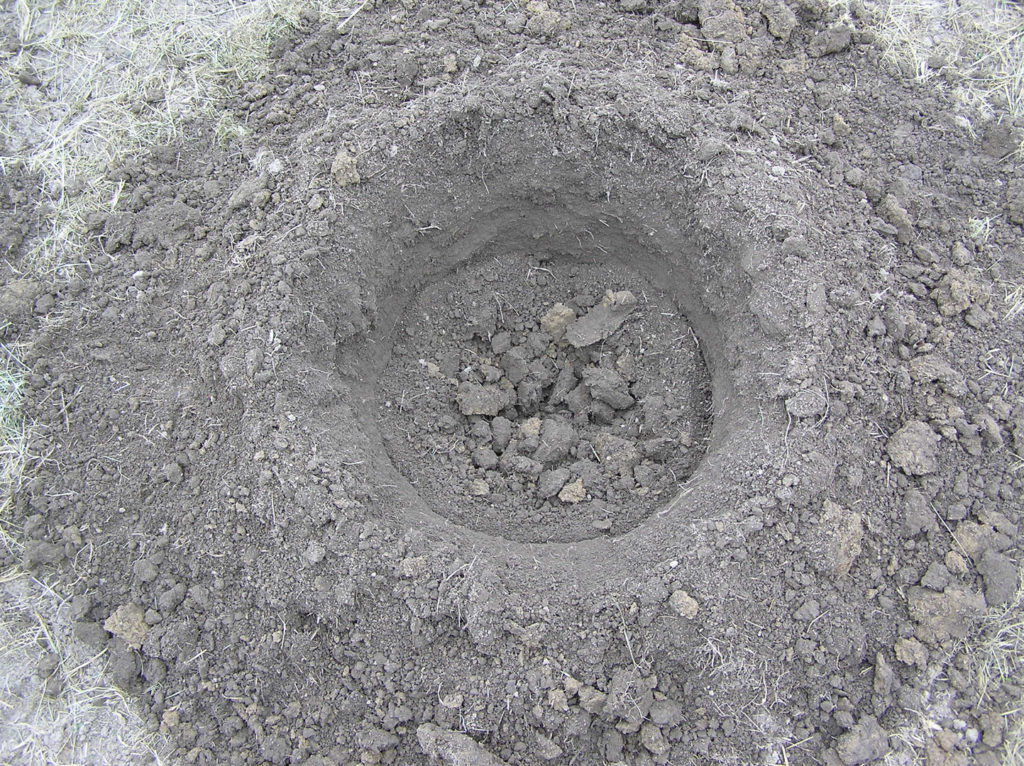
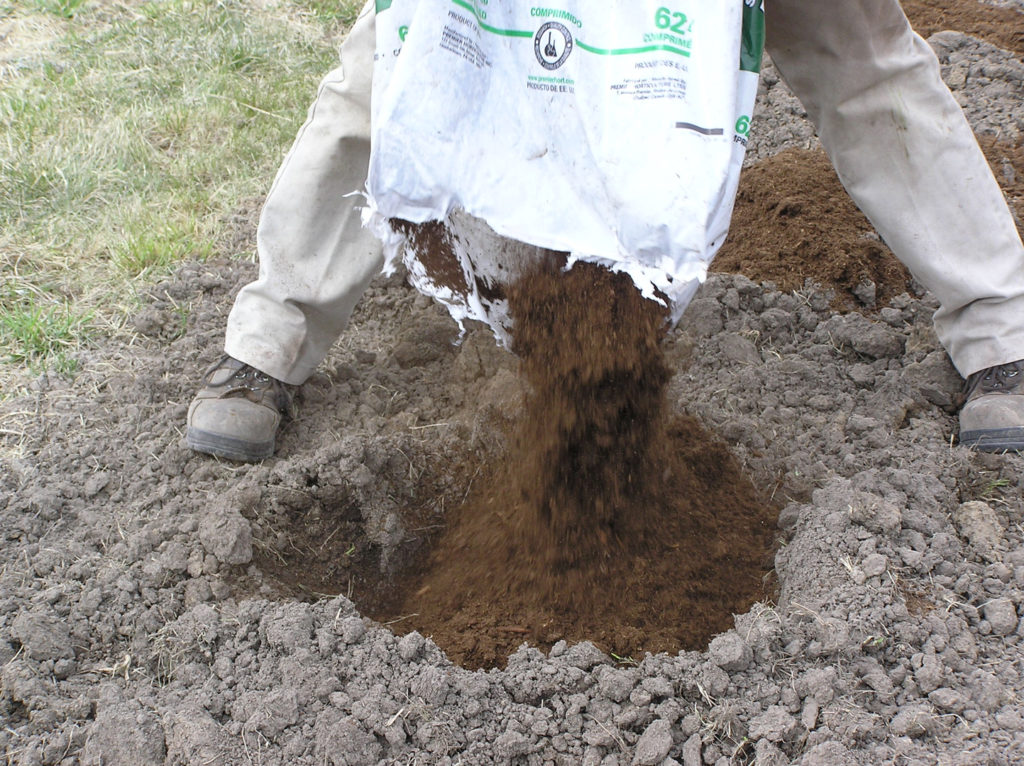
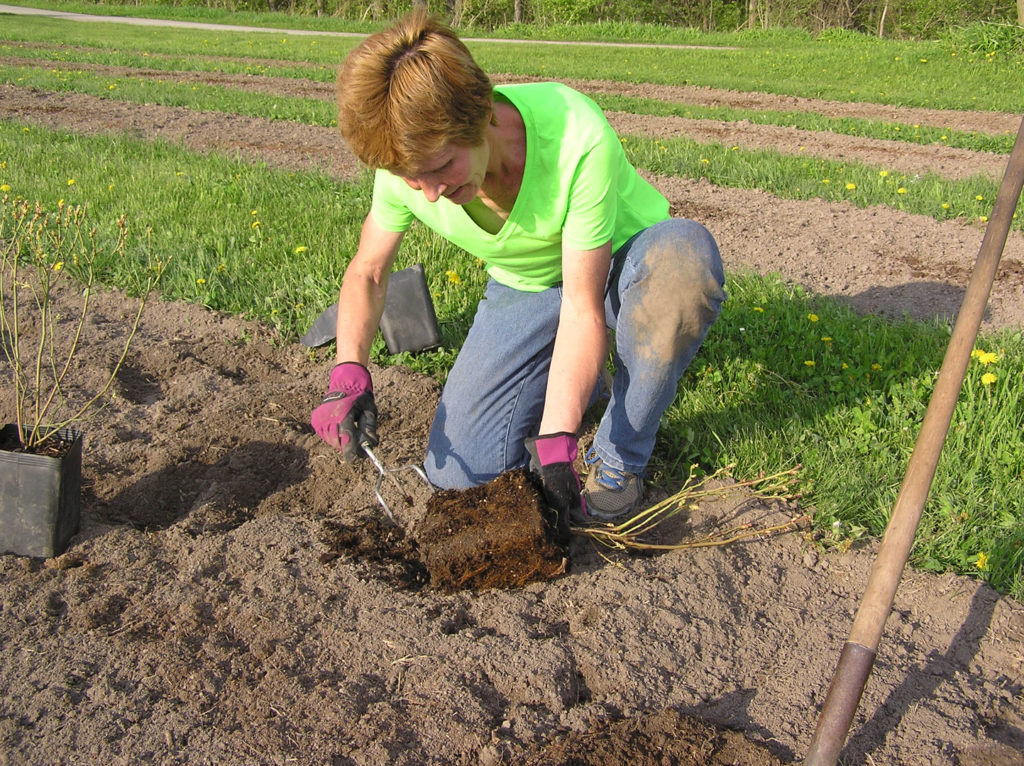
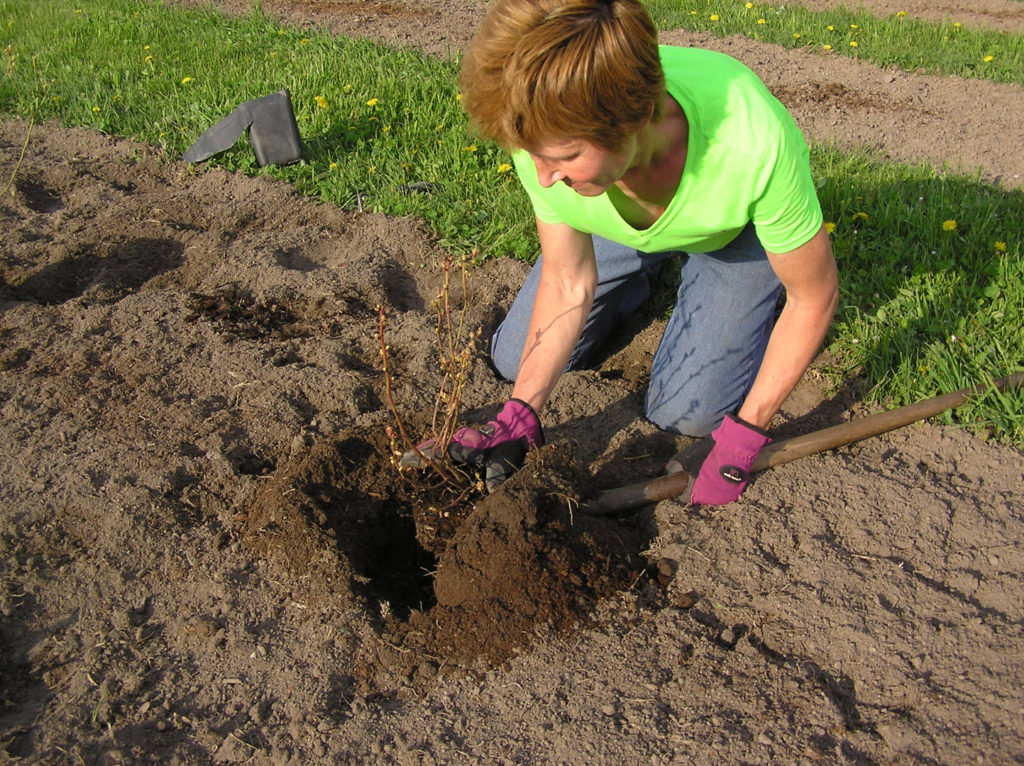
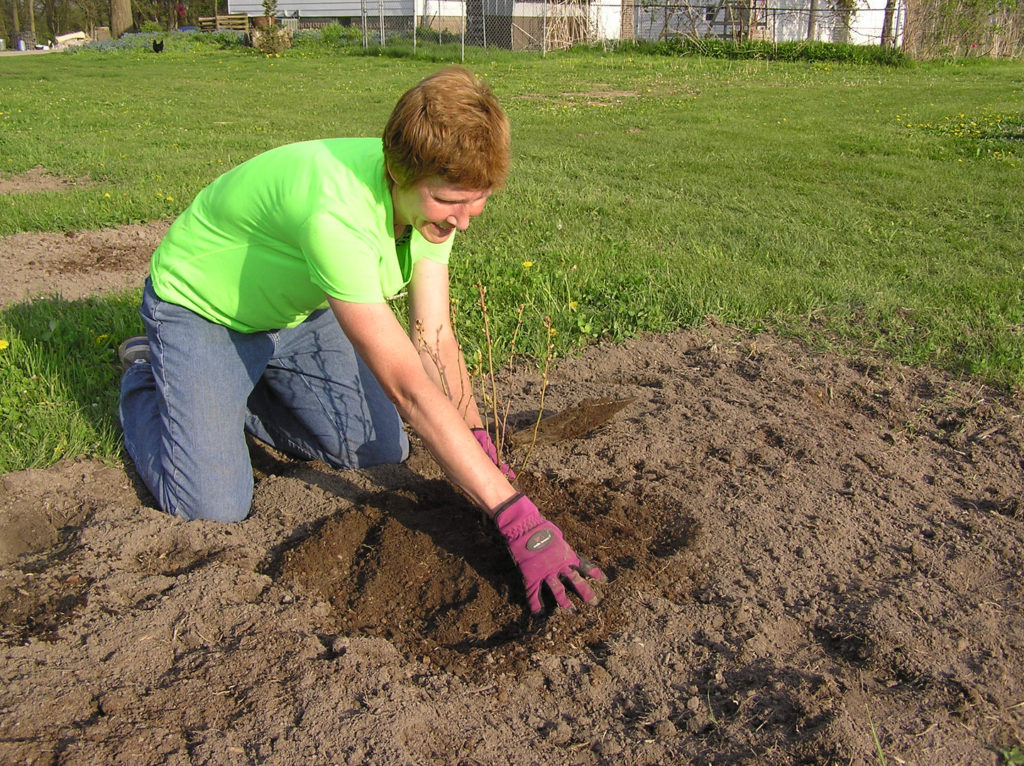
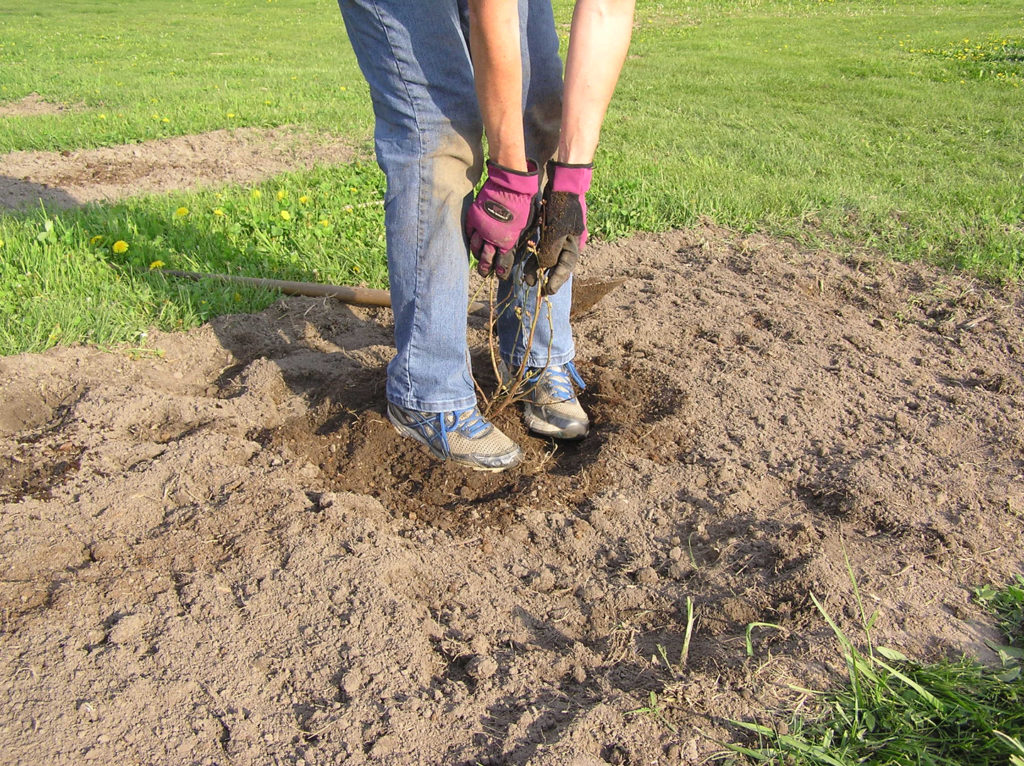
The First Year
Blueberries love acidic soil and around here that means we usually have to amend the soil or change it to an environment which is conducive to growing. Unless you already know you have a pH of 4.5-5.0 you will need to supply the soil with the needed ingredients to plant and maintain acidity.
You will plant your two different varieties no closer than four feet apart. By planting two varieties (or more) you will get more berries. About 50% more berries!
Blueberries are quite tender their first year. You will want to dig a hole approximately 16-24 inches in diameter and about 1 foot deep (blueberries are surface eaters. They do not extend their roots deeply). Pour loose peat moss into the hole until it is even with the surrounding soil. Now, dump several shovels’ worth of soil which you just dug out of the ground to make the hole. Blend the soil and the peat moss until you have a nice mixture (about a 50-50 mixture). Gently remove the blueberry plant from its container. Loosen the soil surrounding the roots. You do not want the roots tightly wound or bound up. Yet, the roots of blueberries are hairy and thin and do not like being disturbed too much. So be gentle. Scoop out from your peat-soil-filled-hole, a container-equivalent sized hole. Place your blueberry plant in the hole; cover and fill in the edges with your fill, making sure that the water flow is away (not toward like a tomato plant), from the center of the plant. The peat moss is sufficient fertilizer for the blueberry’s first year. The most common error folks make in planting blueberries is over fertilizing. You are always safer to under-fertilize than to over fertilize. The second most common mistake is letting your blueberry plant get dehydrated. (Keep in mind that a dry blueberry plant is a dead blueberry plant. But a blueberry plant in standing water is also a dead blueberry plant).
At this point you will start working on changing the surrounding area’s pH. You will sprinkle (about 12 inches wide) 1/4 cup of acidifier around the hole that you just dug for your plant. Do not sprinkle on the plant (be at least 9-12 inches from the plant). If you have pine needles, aged pine bark, or other acid containing mulch, apply 3-4 inches around your plant in a 4×4 area. Do not use freshly cut tree mulch as the mulch will leach out the nitrogen from your soil (and thus steal it from your plant). You can also use lawn clippings but only place 1 inch or less at a time. Fresh grass can get hot and you don’t want to burn those little hairy roots! Water thoroughly. Blueberries need an inch of rain every week. One gallon of water is approximately one inch of rain for an area 12” x 12” – so depending on the size of your root system you will need to adjust accordingly.
Did I mention not to fertilize that first year???? Really, I mean it. The peat moss will provide enough nitrogen and acidity the first year.
Keep weeds, especially grass, from competing with your blueberry bush by pulling routinely or using thick mulch.
Ok, now comes the tough part. The part that even I find a bit painful. All those beautiful blooms? The pretty pink and creamy white bluebells that your new plant is producing? Well, you get to remove them. Yes, every last one of them for the first year. Your plant cannot make blueberries and roots. The blueberry bush needs to focus on root development in order to be a vibrant fruit-producing plant. I always say, “We want roots not fruits the first year.” You will be grateful and thankful next year as you start enjoying the fruits of your labor. Literally.
Happy growing!